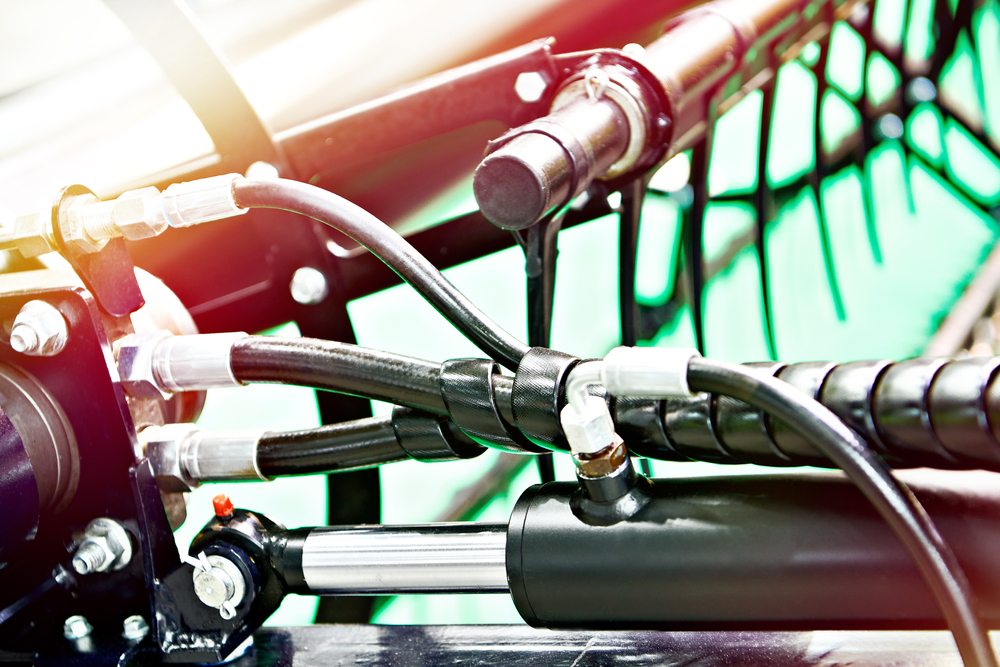
How to Measure/Specify Hydraulic Hoses
When it comes to selecting the right hydraulic hoses for your system, ensuring you choose the correct specifications is crucial for optimal performance and safety. Proper measurement of hydraulic hoses can significantly affect the overall efficiency of your system, while also reducing the risk of failure or costly downtime. Understanding how to measure and specify hydraulic hoses is essential for anyone working with these systems, whether you’re an engineer, technician, or just starting to work with hydraulics.
In this guide, we will explore the steps to measure hydraulic hoses accurately, how to specify the correct hose size, and the key factors you should consider. This guide will answer questions like “how do I know what size hose I need?” and “how is hose diameter measured?” to ensure you can make informed decisions when selecting hydraulic hoses for your application.
Understanding Hydraulic Hose Specifications
Before diving into how to measure hydraulic hoses, it’s important to first understand the critical specifications that define the hose. Hydraulic hoses are designed to transfer fluid under high pressure, and selecting the right hose ensures that the fluid flows efficiently without causing leaks, damage, or excessive wear to the system.
The key specifications to be aware of include:
- Hose Diameter: This is the internal measurement of the hose, which affects the flow rate and pressure handling capabilities.
- Hose Length: The length of the hose determines the distance over which fluid can travel and should be specified based on the specific layout of your hydraulic system.
- Pressure Rating: Hydraulic hoses are rated to withstand certain pressure levels. Choosing a hose with an adequate pressure rating for your application is essential for safety.
- Temperature Rating: Hydraulic hoses need to be capable of operating within the temperature range of your system’s fluids. Hoses should also be resistant to extreme temperatures.
- Material: The construction of the hose (such as rubber, steel braided, or thermoplastic) impacts durability, flexibility, and resistance to wear and tear.
- Reinforcement Layers: The layers of reinforcement (like braided steel or spiral-wound wire) provide additional strength to the hose and affect its pressure capacity.
How Do I Know What Size Hose I Need?
Determining the right size for your hydraulic hose involves understanding both the internal and external dimensions of the hose. The internal diameter, in particular, directly affects the flow rate and pressure capacity of the hose. Here’s a step-by-step guide to help you figure out the appropriate size for your system:
Step 1: Understand Flow Requirements
The size of the hydraulic hose you need depends largely on the flow rate of the hydraulic fluid. To calculate this, you need to consider the flow rate of the pump and the desired fluid velocity in the system. Inadequate hose diameter may restrict the flow and lead to pressure drops, which can cause system inefficiencies.
The flow rate (in gallons per minute or liters per minute) is typically determined by the pump’s specifications and the needs of your specific hydraulic application. If you’re unsure, check the manufacturer’s guidelines for the pump and system requirements.
Step 2: Measure or Calculate Hose Diameter
Once you understand the flow rate required, you can calculate the ideal hose diameter. The diameter must be large enough to handle the flow rate without excessive resistance or pressure loss. Typically, hydraulic hose sizes are expressed in two ways: dash sizes and nominal sizes. For example, a ½ inch hose may be referred to as a “dash 8” (which refers to the internal diameter in sixteenths of an inch).
If you are selecting hoses for an existing system, you may already have hoses in place, and you can measure the diameter directly. To measure the internal diameter, use a caliper or micrometer to get an accurate reading.
Step 3: Account for Pressure and Temperature
In addition to flow requirements, you must consider the pressure rating of the hose. A hose that’s too small might not handle the required pressure without rupturing, leading to failure and downtime. Hydraulic hoses come in different pressure ratings, which are typically marked on the side of the hose. Be sure to select a hose with a pressure rating higher than the maximum pressure your system will experience.
The temperature rating is equally important, as hydraulic systems often operate in extreme conditions. If the fluid temperature is too high for the hose material, the hose can degrade, resulting in premature failure. Always select a hose that is rated to withstand the maximum fluid temperature in your system.
How Is Hose Diameter Measured?
Understanding how hose diameter is measured is key when specifying the correct hose size. The measurement process can vary slightly depending on the type of hose you are dealing with, but generally, the diameter is referred to in two dimensions: the internal diameter (ID) and the external diameter (OD).
Internal Diameter (ID)
The internal diameter is the most important measurement when selecting a hydraulic hose, as it determines the flow capacity of the hose. It’s typically measured in inches or millimeters, and it reflects the clear space inside the hose that allows hydraulic fluid to flow through.
To measure the internal diameter, you can use a caliper, a micrometer, or a specialized hose ID gauge. For precision, make sure the measurement is taken at several points along the length of the hose to account for any variations or deformations in the material.
External Diameter (OD)
While the internal diameter is the critical measurement for flow calculations, the external diameter is still important for understanding how much space the hose will occupy in your system. It’s also a key factor when determining compatibility with fittings or connectors. The external diameter typically includes the thickness of the hose’s outer layers, including reinforcement layers.
You can measure the external diameter using a caliper or tape measure, but be aware that hoses with multiple layers of reinforcement might have a slightly larger external diameter than a single-layer hose.
Hose Wall Thickness
The wall thickness is another important measurement that affects both the internal and external diameters of the hose. A thicker wall increases the hose’s ability to withstand higher pressures, while a thinner wall may be more flexible but can be less durable.
Hose Length: Getting the Right Fit
Choosing the right hose length is just as important as selecting the correct size. If your hose is too short, it may not be able to reach the necessary components of your hydraulic system, while a hose that is too long can introduce unnecessary slack, potentially causing kinks or tangling.
When measuring for hose length, be sure to account for the full distance between the components that need to be connected. You should also factor in bends or turns in the hose’s routing, as sharp bends can restrict fluid flow and damage the hose over time.
How to Measure Hose Length
To measure the hose length accurately, follow these steps:
- Use a flexible measuring tape or string to follow the exact path the hose will take.
- Measure from the center of one fitting to the center of the other, ensuring the tape or string follows any required bends or turns.
- Allow for slight slack in the system, especially if the hose needs to accommodate movement or vibration.
Conclusion
Properly measuring and specifying hydraulic hoses is essential to maintaining a well-functioning hydraulic system. By understanding the importance of hose diameter, pressure ratings, temperature tolerance, and the right length, you can avoid many common issues such as leaks, pressure drops, or hose failure.
When asking “how do I know what size hose I need?” or “how is hose diameter measured?”, keep in mind that selecting the right size and materials for your application is key to the overall efficiency and longevity of your hydraulic system. Always consult manufacturer specifications and guidelines for detailed recommendations to ensure you choose the best hose for your needs.
Whether you’re working with an existing system or designing a new one, accurate hose measurements are vital to achieving optimal hydraulic performance.
Royal Brass Incorporated
Welcome Royal Brass Incorporated! We are your 3rd generation, family-owned, local hose supplier! Our family has dedicated our services to supplying northern California with all types of hoses, fittings, flanges, regulators, valves, adapters, and gauges. We pride ourselves on having the most extensive inventory in northern California. Our inventory ensures that we can fix most products on site, the same day. Here at Royal Brass Incorporated, we only hire qualified individuals who are trained in factory sales. Our fully stocked warehouses ensure that we can fill your hydraulic and pneumatic hose, tubing, and fitting needs on time, every time. High-quality customer service is our goal and has been since 1952. Stop by or contact us today!
Categorised in: Hydraulic Hose





